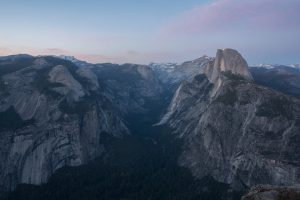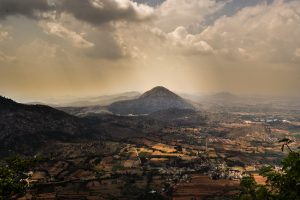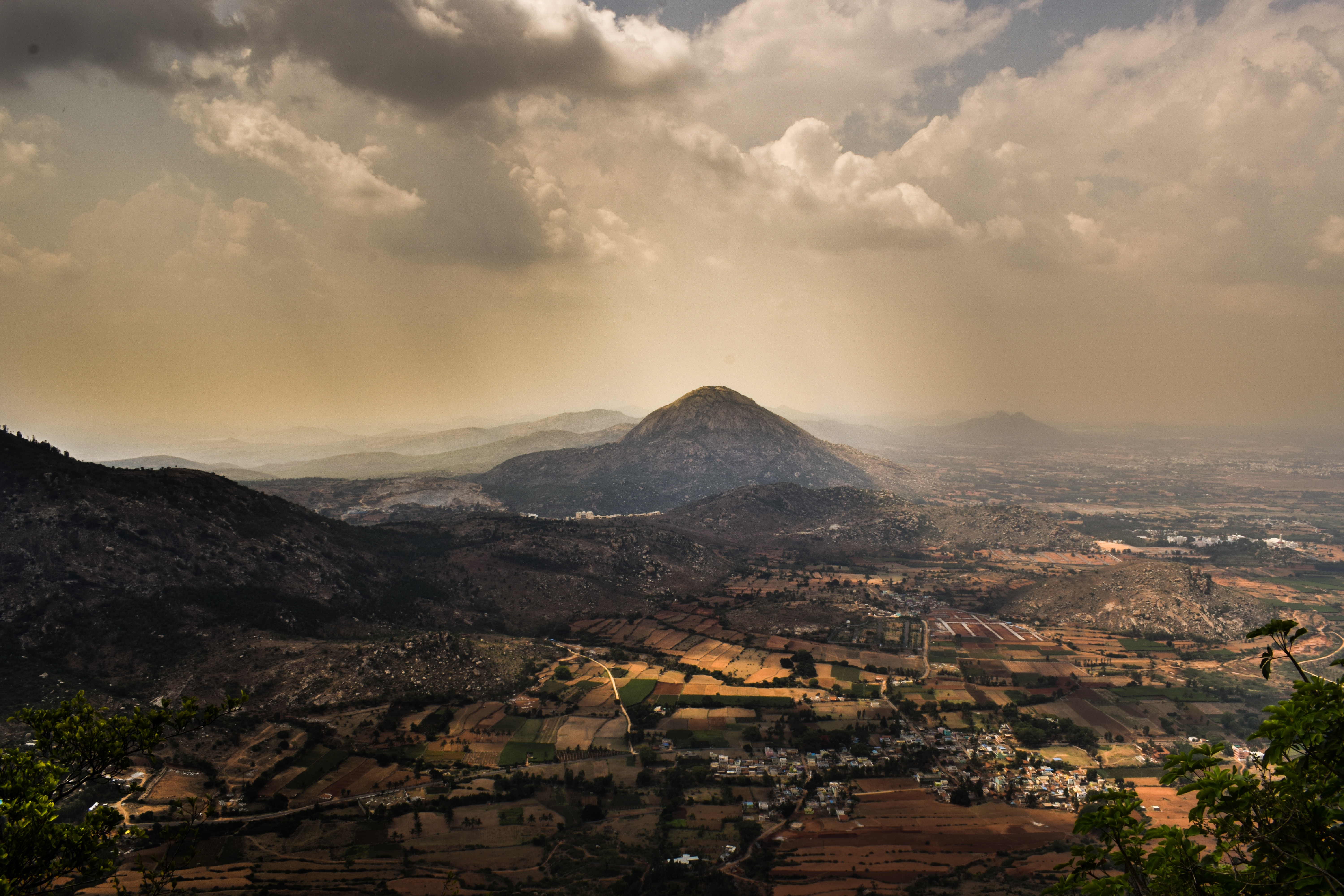The wake of devastation left by Hurricanes Harvey, Irma, and Maria this summer made one thing clear: Natural disasters are expensive. Some estimates put the direct economic damage from Harvey alone as high as $190 billion, and that does not include indirect economic damage such as job loss and supply chain disruption. These storms, which a changing climate will intensify, threaten grave economic costs for human society.
It is, therefore, no surprise that some of the world’s largest companies are taking note. With profit as their bottom line, the global reinsurance provider Swiss Re made headlines this summer when they announced the world’s first policy to insure a natural system from disasters like hurricanes—in this case, a stretch of the Mesoamerican Reef off the coast of Mexico.
Some estimates put the direct economic damage from Harvey alone as high as $190 billion, and that does not include indirect economic damage such as job loss and supply chain disruption.

IN THE PHOTO: STORM. PHOTO CREDIT: SHTTEFAN on Unsplash
With a plan the Guardian described as ‘pioneering’, and others described as ‘innovative’, the insurance giant will collect upwards of $7.5 million in premiums from organizations in Cancún that depend on the reef’s tourism. In return, Swiss Re will pay out anywhere between $25 and $70 million to repair the reef if damaged by a catastrophic storm.
Some environmental organizations, including the Nature Conservancy, which endorsed the proposal, hope that Swiss Re’s announcement could inspire efforts to shield other ‘publicly-owned’ natural systems, such as mangrove forests or coastal wetlands.
At first glance, the plan seems like a good idea with a fairly straightforward rationale. As the destructiveness of climate change impacts increases, so too does disaster relief spending. In the U.S., for example, the five costliest billion-dollar disaster years (2004, 2005, 2008, 2011, and 2012) occurred in the last 15 years. Mexico faced $7.5 billion of coastline damage after Hurricane Wilma in 2005 alone, which led to higher taxes for beachfront hotel owners in order to fund restoration and reef repair.
Shifting costs away from taxpayers and into the private market could therefore help alleviate some of the burdens borne by citizens in areas of the world hard hit by climate change.
However, Swiss Re’s plan leads to a problematic desire to assign a monetary value to the earth’s natural resources and systems, which represents a key tenet of Nature Capitalism and the idea that putting a sufficient price on nature can create the market incentive to conserve it. As a result, so say Nature Capitalists, not only can we mitigate climate change impacts, but we can also slow down and reverse the causes of climate change—all while still operating within the free market.

IN THE PHOTO: Giraffes in Kruger National Park, South Africa. PHOTO CREDIT: Tobin Rogers on Unsplash
It is an admirable goal—at least at first glance. Sadly, though, there’s not much ‘innovation’ or ‘pioneering spirit’ behind it: Nature Capitalism simply represents another blatant attempt to stretch the frontiers of free-market capitalism beyond a reasonable limit.
The Nature Capitalist agenda Swiss Re’s proposal embodies should give us pause. If the overconsumption and overproduction spurred on by a capitalist system helped contribute to climate change in the first place, how can we expect that solutions of the same making will prevent—let alone reverse—climate change and the severity of its impacts?
Nature Capitalism simply represents another blatant attempt to stretch the frontiers of free-market capitalism beyond a reasonable limit.
Rather than deepen our commitment to a political-economic structure that places profit above all else, we must radically shift to a mode of human existence that treats environmental sustainability as its bottom line.
What is (and what is not) Nature Capitalism?
Nature Capitalism is a viewpoint that strives to achieve, in the words of George Monbiot, “the pricing, valuation, monetization, [and] financialization of nature in the name of saving it.”
Originating in the debate over sustainability and development, the concept of Nature Capitalism can be viewed as an attempt to encourage continued economic growth while creating market incentives for environmental sustainability.
For Nature Capitalists, because “philosophical and scientific arguments [for conservation] rarely trump profits,” bringing Earth back from the brink of climate destruction necessarily entails finding a way to incorporate the planet’s natural systems under the purview of the planet’s human systems.
Nature Capitalism also assumes that the stunning success of free markets throughout the latter half of the twentieth century and the unprecedented economic growth humankind saw as a result means that markets are one of, if not the most powerful form of social organization in human history. Moreover, because the environment already provides goods and services to humanity’s benefit at virtually no cost, all that remains is to quantify the value of these natural assets in a way that properly inserts them into the free market, allowing regular pricing mechanisms to compel sustainability.
What emerges is a treacherous balance.

IN THE PHOTO: Yosemite National Park, United States. PHOTO CREDIT: Tommy Lisbin on Unsplash
How can nations continue to achieve economic growth without totally depleting the resources and ecosystems necessary to sustain them?
The Nature Capitalist solution lies in capturing the value of the environment in dollar terms and letting the market run its course. As straightforward as this may seem, the implications of Nature Capitalism serve to perpetuate the idea that the preservation of Earth’s natural systems requires absorbing them into Earth’s human systems—marking Nature Capitalism as yet another ideological construct of neoliberal capitalism.
A clear distinction must be made between assigning value to natural resources and commercializing the environmental movement’s sustainability goals. There are obvious examples of the latter. In February of last year, former vice president of the United States Al Gore labelled green energy technologies the “biggest new business opportunity in the history of the world.” Just a few months prior, Chris Field, the Perry L. McCarty Director of the Stanford Woods Institute for the Environment, argued that “free markets have been a remarkably successful” in bringing forward “the best ideas and the best application of technology and capital.” Therefore, Field suggested, we must harness markets within the environmental movement to direct social activity towards sustainable outcomes.
Initiatives aimed at slowing down and reversing climate change can occur, according to influential figures like Field and Gore, within the confines of human systems—i.e., in the case of green energy production—by seizing opportunities within market capitalism. These approaches indicate a way to generate profit and development without further degrading natural resources or systems. However, they ultimately fall prey to the same limitations posed by Nature Capitalism by subscribing to a system dominated by the compulsion to maximize profit.

IN THE PHOTO: Bengaluru, India. PHOTO CREDIT: hash whole.studios on Unsplash
What are the practical problems with Nature Capitalism?
What makes Nature Capitalism somewhat difficult to critique is its status as a primarily ideological concept. While it has been extensively debated in environmental development literature, it remains unclear how such a system would materialize in the real world.
Until the idea moves from theory to practice, it is hard to adequately determine whether Nature Capitalism can achieve its desired outcomes. Nonetheless, the theoretical basis of Nature Capitalism exhibits serious practical shortcomings and relies on several tenuous assumptions.
First, assigning a monetary value to the environment is implausible, if not impossible, because Nature Capitalism tends to treat ecosystems and natural resources in isolation rather than conceiving of the environment holistically.
Some researchers claim that sophisticated price models “will allow policymakers to compare the value of natural capital with the value of more traditional forms of capital, thus encouraging better investments and more sustainable decisions in the future.”
Yet even the most sophisticated models we have at our disposal do not account for the negative externalities of environmental degradation. For example, Yale professor Eli Fenichel and his colleagues estimate the depletion of a groundwater aquifer in Kansas between 1996 and 2005 cost the state about $110 million per year. Altogether, this is a hefty sum, but it fails to reflect indirect costs imposed by the second-order consequences of groundwater depletion such as subsidence, decreased river and stream flow, and deteriorating water quality. Not to mention the effects stemming therefrom, including habitat loss, species displacement, and potential losses of biodiversity.
All of these entail cascading effects from degradation and underscore the holistic nature of the environment and the difficulties related to the environmental pricing method upon which Nature Capitalism relies.
Second, the fact that companies benefiting from the environment could do so for a profit begs the question: to what extent will those companies actually preserve the natural environment?
IN THE PHOTO: Kelso Dunes, United States. PHOTO CREDIT: Matt Artz on Unsplash
Reaping profits from the environment does not necessarily incentivize protection and restoration of Earth’s resources and systems to their full capacity, as Nature Capitalists assume. It simply entails protecting and restoring them to a level where their ‘goods’ and ‘services’ remain profitable.
As a result, this creates a perverse structure of demand whereby the ‘goods’ and ‘services’ deemed profitable to humans prevail, while those deemed otherwise do not.
Consider charismatic megafauna. Some claim that protecting the habitats of charismatic megafauna such as elephants, lions, and other human-pleasing species, benefits conservation efforts as a whole since these animals represent ‘cocktail indicators’ of biodiversity.
However, research as early as 2000 found that maps of the ‘Big Five’ African mammals—lions, leopards, elephants, African buffalo, and rhinoceroses—did not represent biodiversity significantly better than merely choosing at random. In other words, conserving the habitats of charismatic megafauna conforms to human demand for certain species rather conserving the habitats of ugly or inconspicuous species that would more fully preserve ecosystem capacity.
Third, Nature Capitalism may actually create perverse incentives for environmental destruction rather than conservation.
In the case of Cancún’s reef, Swiss Re could pay out as much as $25 to $70 million in any given year for restoration if it were destroyed by a storm, thus creating opportunities for the policyholders—hotels and private companies, mostly—to commit new acts of environmental fraud, like making fraudulent insurance claims.
Last year alone, the ten most expensive environmental fraud cases settled by the U.S. Department of Justice totalled more than $15.4 billion. Indeed, perverse incentives from acts of environmental fraud, including falsifying records, polluting, and making fraudulent insurance claims, generate wasteful spending that could go directly towards environmental sustainability goals.
Indeed, Nature Capitalism presents significant practical problems that limit its realization and effectiveness as more than a theoretical ideal.
What is the deeper problem with Nature Capitalism?
However, Nature Capitalism embodies something more deeply problematic than its practical shortcomings. This is the fact that it seeks to dislocate the value of the environment from itself and relocate it within the human-made bounds of capitalism.
Consider this: when you enter into any kind of proprietary social arrangement, you necessarily relinquish the concept of truly non-excludable public goods; this makes your right and, more broadly, people’s human right to the environment, contingent upon access to the capital necessary to then access nature in turn.
IN THE PHOTO: Amboseli national park, Kenya. PHOTO CREDIT: Sergey Pesterev on Unsplash
In simple terms, by treating the environment as a basket of goods and services valued in dollar-terms which can be bought, sold, insured, and subjected to myriad other proprietary market forces, Nature Capitalism presumes to alter the perceived value of the environment to align with the standard of value capitalism sets—i.e., raw economic value—rather than an intrinsic moral value.
The environment becomes, therefore, not valuable for its own sake, but for the sake of capitalism, and access to it, through property over natural resources and ecosystem services, flows to the rich, those with the means to ‘benefit’ them.
Coral reefs become not simply aquatic domains to admire, but assets to insure. Arborous carbon sequestration becomes not simply a natural process, but an added input in the supply chain.
Ultimately, beyond marginalizing the human right to the environment, commercializing nature gives the greatest financial benefits to those least vulnerable to the effects of climate change (the rich).
Climate change impacts have already been shown to disproportionately affect poorer countries, municipalities, and individuals, and those with more access to capital—traditional forms of capital, not natural capital—enjoy greater flexibility in financing adaptation measures whether in the form of migration or resilient investment.
Given that all human systems depend on the natural environment to survive and thrive, drawing nature under capitalism makes as much sense as putting the cart before the horse.
Conclusions
Nature Capitalism is a well-intentioned attempt to make sustainable environmental policies a reality within a global capitalist system dominated by the desire to maximize profit and economic growth.
However, because it relies on the monetization of natural resources and ecosystem services in order for them to be considered sufficiently ‘valued’, it continues to operate within the bounds and confines of capitalism. These rules dictate that decisions are reached by considering a series of tradeoffs, in which there are clear winners and losers.
In this case, we can assume that if natural assets are priced adequately in comparison with private interest, policymakers will hopefully recognize that the cost of depleting them far outweighs the benefits of development. But if they are not priced accurately, their destruction is assured.
In short, as we attempt to merge natural systems with human ones, we can hope that sometimes the environment will be the ‘winner’—but just as often, it is likely that the environment will continue to lose.
The inherent problem with Nature Capitalism is that it continues to play by the rules of an economic system that places profit above all else.
Perhaps, if we can truly find a way to put a price on our environment, those rules can work in favour of protecting it. But what if we can never assign a price to nature that truly encapsulates its intrinsic moral value?
We must accept that there is an innate value in the natural world that human-constructed metrics will never be able to accurately reflect. Beyond the vast intricacies of interconnected ecosystems, the vital impacts of biodiversity that science is still unable to fully understand, and the implications of a global climate system, what makes nature so impossible to value in monetary terms is its epistemic holism that lies outside of scientific reductionism.
We cannot assign human value to nature precisely because nature lies outside of humanity.
So where do we go from here? We need to ask important questions, like what does a post-capitalist valuation of nature look like, and how we might get there?
However, we must first accept one key notion: the world would be a far better, environmentally safer place if companies had sustainability, not profit, as their bottom line.
Co-Authored By Molly Morabito

Molly Morabito is a graduate student at the London School of Economics and Political Science, pursuing an MSc in Environmental Policy and Regulation. She graduated from American University with a B.A. in Communications, Legal Studies, Economics and Government. As an undergraduate, she held a number of internships in the non-profit sector, working with organizations such as Citizens Climate Lobby (CCL), Alliance to Save Energy, and the Environmental Defense Fund (EDF). Molly also spent a year as a visiting student at Lady Margaret Hall, University of Oxford. In her spare time, she is an avid surfer, hiker and scuba diver.










